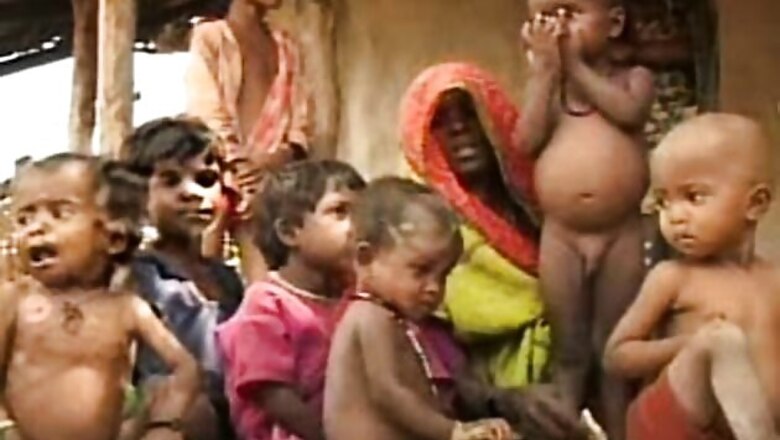
views
New Delhi: India may be an economic success story. But a 'Save the Children' study says around a quarter of Indian kids in the 0-6 age group go without food every day.
And nearly 30 per cent of Indian families have been forced to cut back on food due to rising food prices, said the study released on Tuesday along with a report on tackling child malnutrition.
Save the Children conducted the study in five countries.
"It is shocking that parents are telling that they cannot buy food for their children because of high prices. This is destructive for the child's development as malnutrition is fatal and contributes to child mortality," Jasmine Whitbread, Save the Children International CEO, told IANS.
The study was conducted in December and January in Nigeria, India, Pakistan, Bangladesh and Peru. It sampled over 1,000 adults in rural and urban areas.
"The reason we chose these countries was because the five nations cover more than half of the world's malnourished children. India is a growing economy and this survey tells (us) the urgent need to set goals and measure progress for achieving the millennium development goals (MDG)," Whitbread added.
Nearly 66 per cent respondents in India said that rising food prices were a pressing concern in 2011. Another 17 per cent parents said their children skipped school to work and pay for food.
The report says that in India and Nigeria, parents struggle to feed their children. A large section of the population seems unaffected by the economic progress of these countries.
Food inflation in India has dipped after remaining high for a long time. But figures show that although prices of foodgrains have dipped, those of vegetables, milk, eggs, meat and protein diet have risen substantially.
According to the study, every year around 1.72 million children under five years die in India. Of these, more than half the deaths take place in the first one month of a child's life.
India also ranks 134 among 187 countries in Human Development Index, 73 among 78 countries as the best place to be a mother, and 67 among 81 countries in the Global Hunger Index.
More than a fifth of under five deaths per year take place in India - the highest anywhere in the world.
India also holds the 11th highest rate of stunting globally.
Eighty percent of stunted children live in just 20 countries. Fortyeight percent of the children are stunted, said Save the Childrern.
Stunting means the children's body and brain have failed to develop properly due to malnutrition.
It said that social protection schemes - which provide families with regular cash transfers or food parcels that provide a safety net during hard times - have proved successful in many countries in protecting families from the worst effects of poverty.
Brazil, it said, has shown how investing in social protection can dramatically reduce hunger and malnutrition, and also contribute to economic growth.
"Our recommendations include setting up a nutrition mission, better defining and refining the selection criteria of families below poverty line and a host of essential interventions to improve nutritional security of families," said the NGO's India CEO Thomas Chandy.




















Comments
0 comment